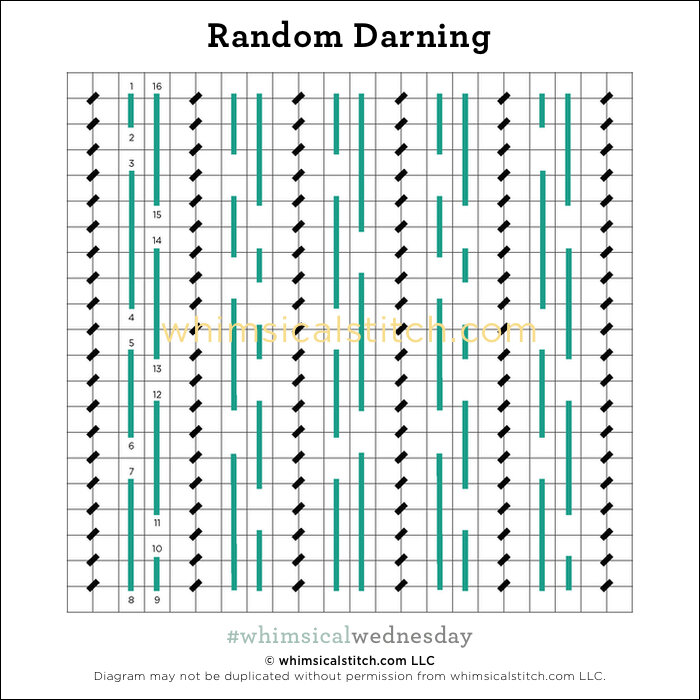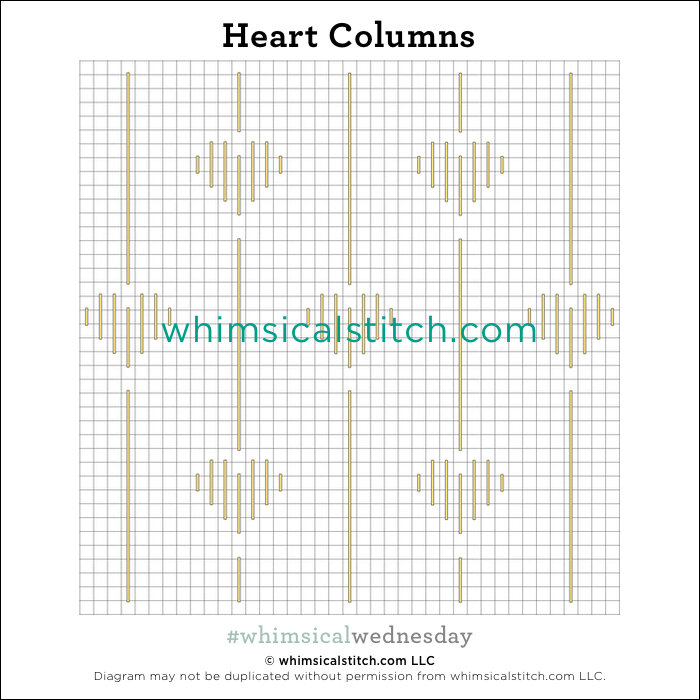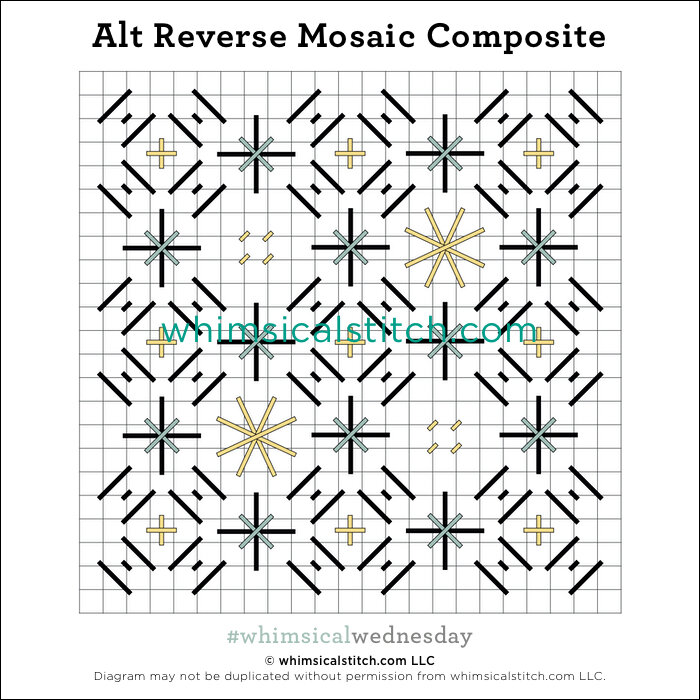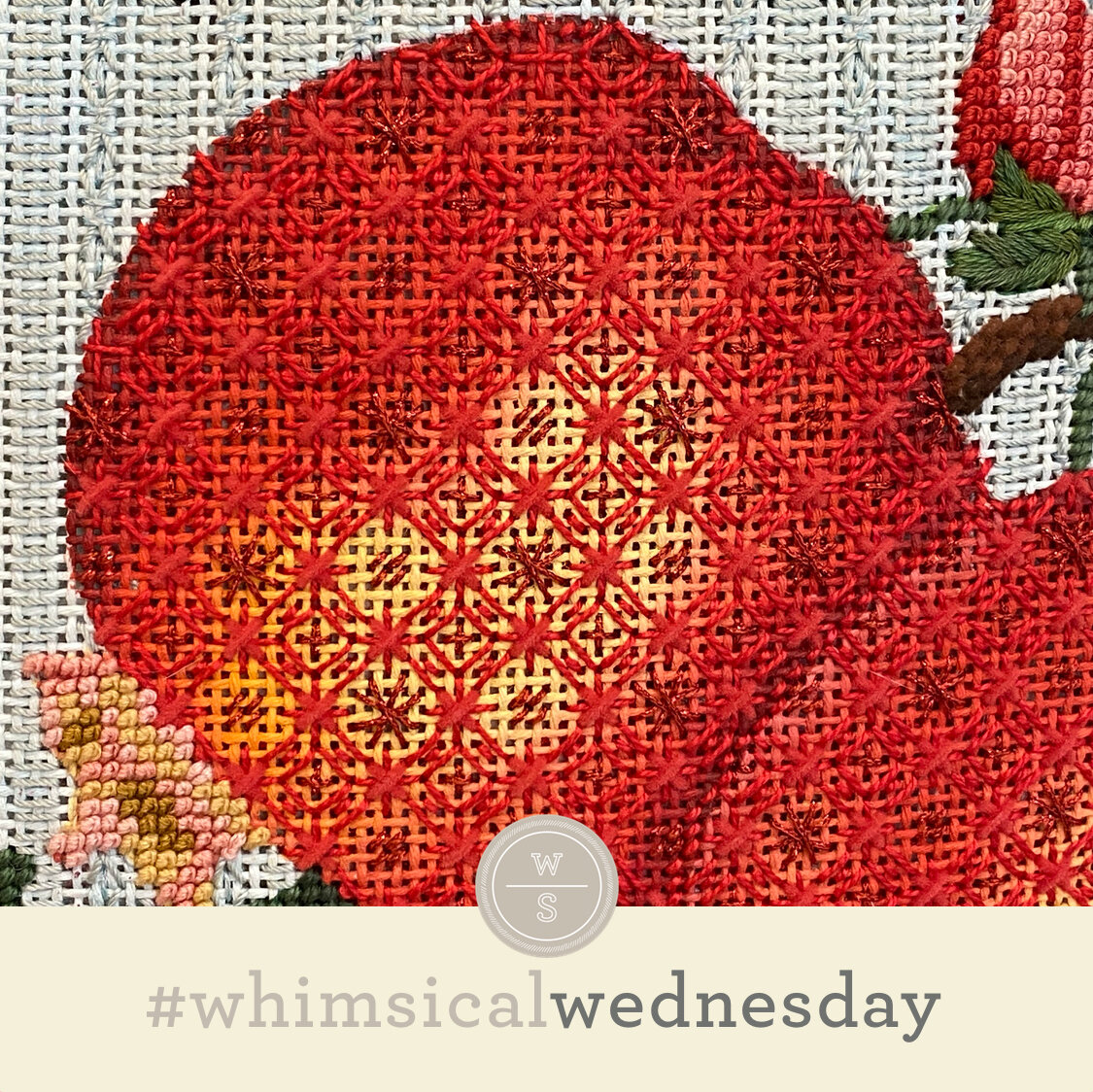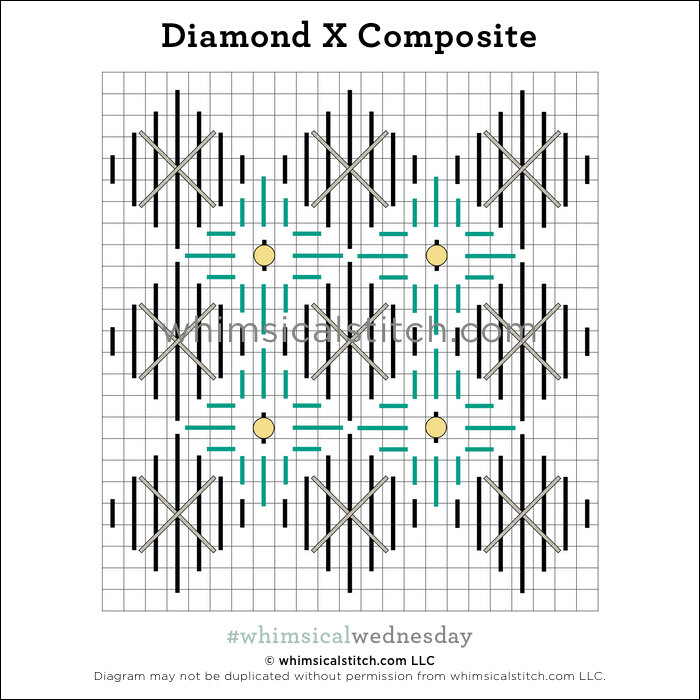I’m not sure what I like more about today’s stitch…how it uses an overdyed thread or the fact the darning stitches are random. Regardless of the answer, I can’t wait to integrate this into an upcoming project.
Click on image to see on whimsicalstitch.com's Pinterest account. Visit pinterest.com/whimsicalstitch/whimsicalwednesday for a library of all #whimsicalwednesday and #smallspacesunday stitch diagrams.
I numbered the darning sequence in one of the columns simply to remind you that darning stitches are similar to running stitches, traveling across or down a straight axis, creating a smooth stitch versus the crisp wrapped edge of a traditional needlepoint stitch. Make sure you have enough thread to complete a row from edge to edge, as ending a darning stitch mid-row creates an uneven look.
A tiny bit of background. I love overdyed threads and, as you may know by now, I love me my darning stitches. Prior to a dear stitching friend sharing this stitch with me, I would have said I use overdyed thread sparingly and typically for leaves, flowers, and water. I rarely, if ever, used overdyed thread for basketweave or continental stitches. And darning stitches always involved distinct, repeated sequences.
Yeah…I was wrong. The combination of this darning idea with the overdyed is just charming. It’s everything I would have said no to and I love it.
The stitched sample is an exterior wall with Gloriana Silk Floss (black lines) and Perle Cotton (turquoise lines).
I plan on using this stitch for tree trunks with two colors of Impressions or a pair of pants with overdyed silk floss (black lines) and solid silk floss (turquoise lines). Flip the stitch 90° and use it for a green field with overdyed silk floss or overdyed wool (black lines) with a single strand silk (turquoise lines).
Something to remember…you can make the columns of darning stitches as wide as you need. Say, five rows of darning for every column of Continental stitches. It’s up to you!
This stitch diagram, along with all other #whimsicalwednesday and #smallspacesunday stitch diagrams, can also be found on a Pinterest board here.
Be sure to follow whimsicalstitch.com on Facebook, Pinterest, Instagram, and Twitter.
If you like what you see on this blog, want to learn some very creative decorative stitches, and how to put them all together, whimsicalstitch.com has a book for you! Mary’s Whimsical Stitches is a contemporary how-to collection of more than 250 stitches for stitchers regardless of skill level. The book includes updated and sequenced diagrams from this blog, all-new stitches, and a chapter on the basics of needlepoint. For more information, visit here.
whimsicalstitch.com also sells Stitch Guides and Stitch Concepts for Melissa Shirley Designs, Zecca Designs, Sandra Gilmore, Purple Palm, Maggie, and Penny MacLeod, and many more. Click here to see the newest guides and click here to see the entire collection.
I hope you have the perfect spot for this stitch! Please enjoy! Have a wonderful #whimsicalwednesday!
A Note about Diagrams
I use color in diagrams to make them as clear as possible. The primary function of different colored lines is to illustrate a stitch sequence. For example, layering of colors demonstrates you add them in that order. They can also provide ideas on how to integrate additional threads (one line for each color). Or, you can use the same thread for all color lines. That's where I encourage you to use your imagination for the space you are stitching!


